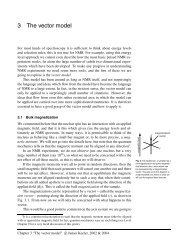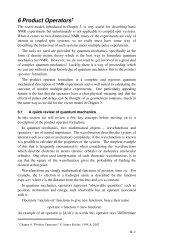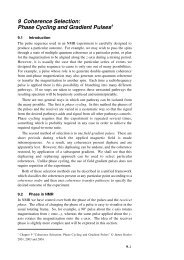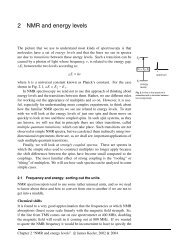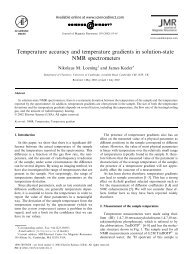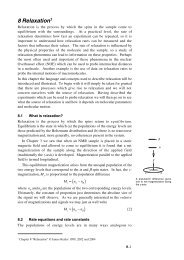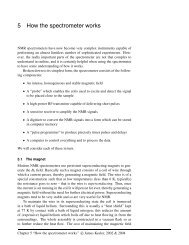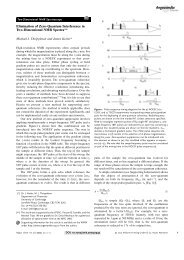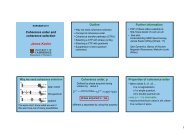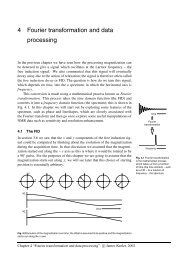Phase Cycling and Gradient Pulses - The James Keeler Group
Phase Cycling and Gradient Pulses - The James Keeler Group
Phase Cycling and Gradient Pulses - The James Keeler Group
Create successful ePaper yourself
Turn your PDF publications into a flip-book with our unique Google optimized e-Paper software.
1.0<br />
M x<br />
0.5<br />
0.0<br />
10 20 30 40 50<br />
γGr max t<br />
-0.5<br />
<strong>The</strong> black line shows the decay of magnetization due to the action of a gradient pulse. <strong>The</strong> grey line is an<br />
approximation, valid at long times, for the envelope of the decay.<br />
Note that the oscillations in the decaying magnetization are imposed on an<br />
overall decay which, for long times, is given by 2/(γGtr max<br />
). Equation [11]<br />
embodies the obvious points that the stronger the gradient (the larger G) the<br />
faster the magnetization decays <strong>and</strong> that magnetization from nuclei with higher<br />
gyromagnetic ratios decays faster. It also allows a quantitative assessment of<br />
the gradient strengths required: the magnetization will have decayed to a<br />
fraction α of its initial value after a time of the order of 2 ( γGαr max ) (the<br />
relation is strictly valid for α



